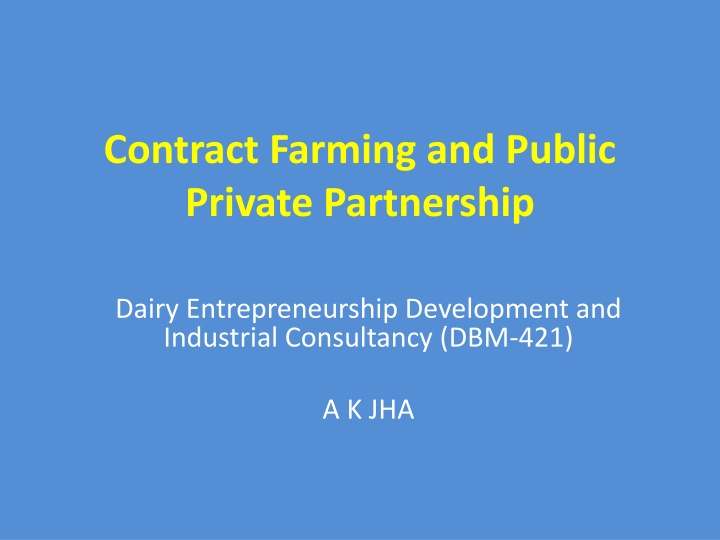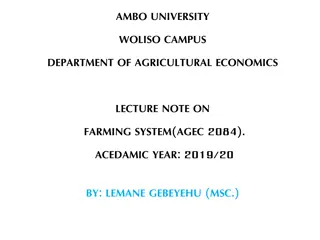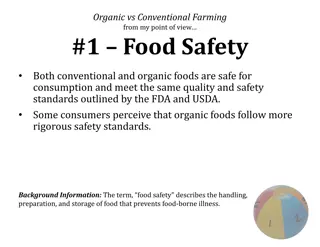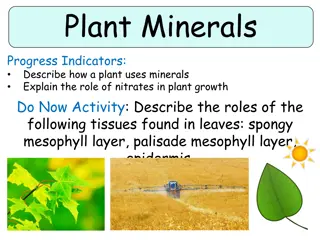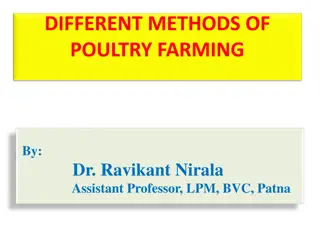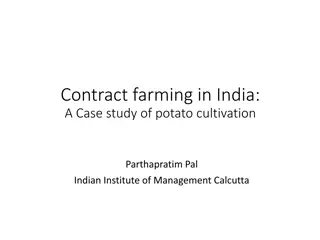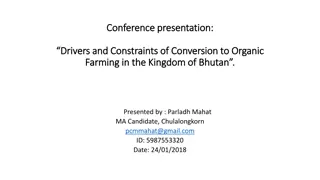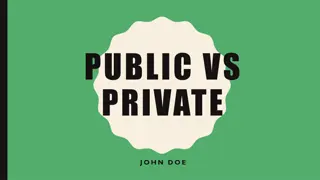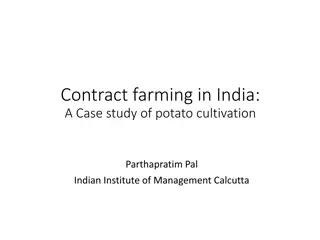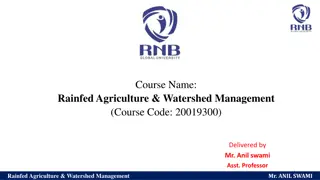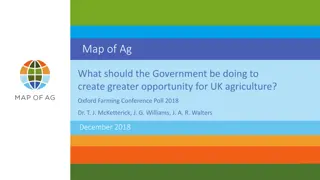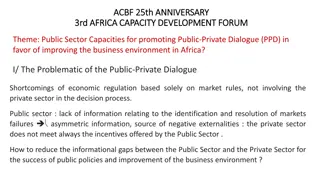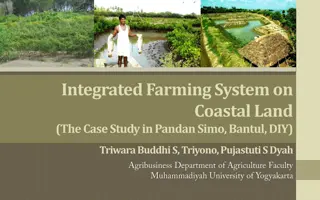Contract Farming and Public-Private Partnership in Agriculture
Indian agriculture, dominated by smallholders, faces challenges such as weak market linkages and low surplus. Contract farming emerges as a solution, benefiting both farmers and sponsors. Historical milestones and types of contract farming models are explored, highlighting the benefits and nuances of this approach in driving agricultural productivity and profitability.
Download Presentation

Please find below an Image/Link to download the presentation.
The content on the website is provided AS IS for your information and personal use only. It may not be sold, licensed, or shared on other websites without obtaining consent from the author.If you encounter any issues during the download, it is possible that the publisher has removed the file from their server.
You are allowed to download the files provided on this website for personal or commercial use, subject to the condition that they are used lawfully. All files are the property of their respective owners.
The content on the website is provided AS IS for your information and personal use only. It may not be sold, licensed, or shared on other websites without obtaining consent from the author.
E N D
Presentation Transcript
Contract Farming and Public Private Partnership Dairy Entrepreneurship Development and Industrial Consultancy (DBM-421) A K JHA
Introduction Indian agriculture is dominated by smallholders The average size of holding is very tiny Farmers generate very small marketable surplus Their linkage to markets are weak They often fail to realize remunerative prices Often lack information and inputs Contract farming provides a plausible solution to many of these problems To set up and adopt technically, commercially, and economically viable agribusiness solutions
Some Historical Milestones Japan government introduced it for the first time in 1895 in Taiwan Europeans first introduced cultivation in the Bengal region under the regime of East India Company In 1920 s, ITC formalized contract farming with farmers in Andhra Pradesh for growing Virginia Tobacco. Pepsi Company introduced in in India for cultivation of Tomato and Potato in 1927. Green revolution further provided impetus In Karnataka contract farming was started with cof Gherkin in 20thCentury in indigo and opium
Contract Farming Contract farming is essentially an agreement between unequal parties: companies, government bodies or individual entrepreneurs economically weaker farmers on the other (FAO, 2001). It is, however, an approach that can contribute to both increased income for farmers and higher profitability for sponsors. efficiently organized and managed, contract farming reduces risk and uncertainty for both parties as compared to buying and selling crops on the open market. on the one hand and
Contract Farming It is defined as agreement between farmers and processing or marketing firms for the production and supply of agricultural products under predetermined prices. The important feature of contract farming is that the buyer/contractor provides all the material inputs and technical advice regarding crop production to the farmer. It is a system for the production and supply of land based and allied produce by primary producer (farmer) under advance contract. The essence of such contract is commitment to supply agricultural products of specific type at specific time, price and quality to the contracting party. forward agreements at
Types of Contract 1. Procurement Contract: Only sale and purchase conditioned are mentioned. 2. Partial contract: Only some of the inputs are supplied by the contracting party and the farm output is purchased at predetermined price. 3. Total Contract: Contracting party supplies and manages all the inputs on the farm and farmer becomes just a supplier of land and labour.
Advantages for farmers i) Provision of inputs and production services ii) Access to credit iii) Introduction of appropriate technology iv) Skill Transfer v) Guaranteed and fixed pricing structure vi) Access to reliable markets Problems faced by farmers i) Increased risk ii) unsuitable technology and crop incompatibility iii) Manipulation of quotas and quality specification iv) Corruption v) Domination by monopolies vi) Indebtedness and over reliance on advances
Problem Faced by Contracting Party i) Land availability constraint ii) Social and cultural constraints iii) Farmer discontent iv) Extra contractual marketing v) Input diversion
Public Private Partnership (PPP) This is a form of organization, funded and operated through a partnership of government and one or more private sector organizations. It is a contract between public sector organization and private organization where in the private party provides public services and bears financial, technical and operational risk.
Public Private Partnership (PPP) Based upon nature of contract a public private partnership may assume any of the following forms: a) The cost of using the services is totally charged to users and not to the taxpayers. b) Capital investment is made by the private sector based upon contract with government to provide agreed services and the cost of providing the services is the responsibility of the government.
Public Private Partnership (PPP) In PPP mode, generally a private sector organization forms organizational set up to develop, build, maintain and operate the asset for the contracted period. In the infrastructure arrangement and contracts that guarantee and secure the cash flows make the public private partnership mode a suitable arrangement for project completion. a special separate sector, complex
